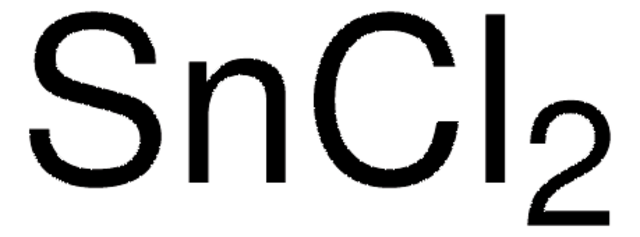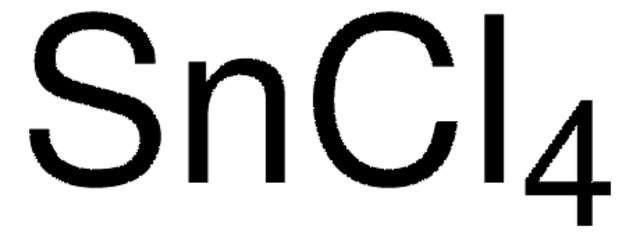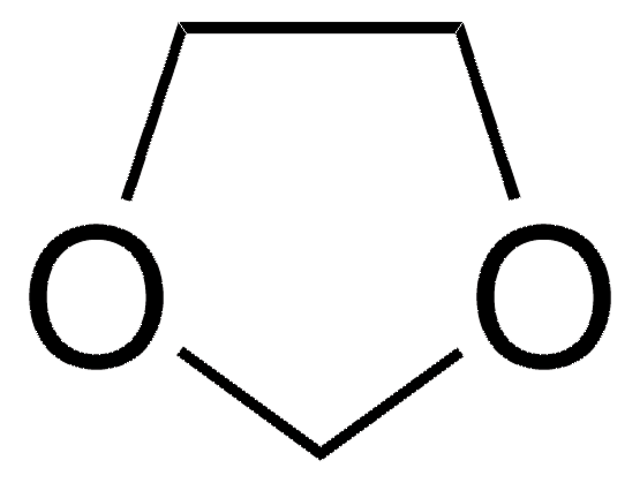Kluczowe dokumenty
96527
Tin(II) chloride dihydrate
suitable for AAS
Synonim(y):
Stannous chloride dihydrate
About This Item
Polecane produkty
Próba
≥96.0% (RT)
Poziom jakości
Formularz
crystals
metody
AAS: suitable
bp
652 °C (lit.)
mp
37-38 °C (dec.) (lit.)
rozpuszczalność
hydrochloric acid: passes test
ślady anionów
sulfate (SO42-): ≤20 mg/kg
ślady kationów
As: ≤1 mg/kg
Ca: ≤50 mg/kg
Cu: ≤10 mg/kg
Fe: ≤20 mg/kg
Hg: ≤5 μg/kg
K: ≤50 mg/kg
NH4+: ≤10 mg/kg
Na: ≤100 mg/kg
Pb: ≤50 mg/kg
ciąg SMILES
O.O.Cl[SnH2]Cl
InChI
1S/2ClH.2H2O.Sn/h2*1H;2*1H2;/q;;;;+2/p-2
Klucz InChI
FWPIDFUJEMBDLS-UHFFFAOYSA-L
Szukasz podobnych produktów? Odwiedź Przewodnik dotyczący porównywania produktów
Opis ogólny
Zastosowanie
- As a reducing agent for the determination of hydride forming species by AAS.
- In the conversion of organomercurials into inorganic mercury determined using a flow injection-cold vapor atomic absorption spectrometry
- In the determination of total mercury content, using atomic fluorescence spectroscopy and mercury speciation was performed using gas chromatography inductively coupled plasma mass spectrometry (GC-ICPMS).
Hasło ostrzegawcze
Danger
Zwroty wskazujące rodzaj zagrożenia
Zwroty wskazujące środki ostrożności
Klasyfikacja zagrożeń
Acute Tox. 4 Inhalation - Acute Tox. 4 Oral - Aquatic Chronic 3 - Eye Dam. 1 - Met. Corr. 1 - Skin Corr. 1B - Skin Sens. 1 - STOT RE 2 Oral - STOT SE 3
Organy docelowe
Cardio-vascular system, Respiratory system
Kod klasy składowania
8B - Non-combustible corrosive hazardous materials
Klasa zagrożenia wodnego (WGK)
WGK 3
Temperatura zapłonu (°F)
Not applicable
Temperatura zapłonu (°C)
Not applicable
Środki ochrony indywidualnej
Eyeshields, Faceshields, Gloves, type P3 (EN 143) respirator cartridges
Wybierz jedną z najnowszych wersji:
Masz już ten produkt?
Dokumenty związane z niedawno zakupionymi produktami zostały zamieszczone w Bibliotece dokumentów.
Klienci oglądali również te produkty
Nasz zespół naukowców ma doświadczenie we wszystkich obszarach badań, w tym w naukach przyrodniczych, materiałoznawstwie, syntezie chemicznej, chromatografii, analityce i wielu innych dziedzinach.
Skontaktuj się z zespołem ds. pomocy technicznej









